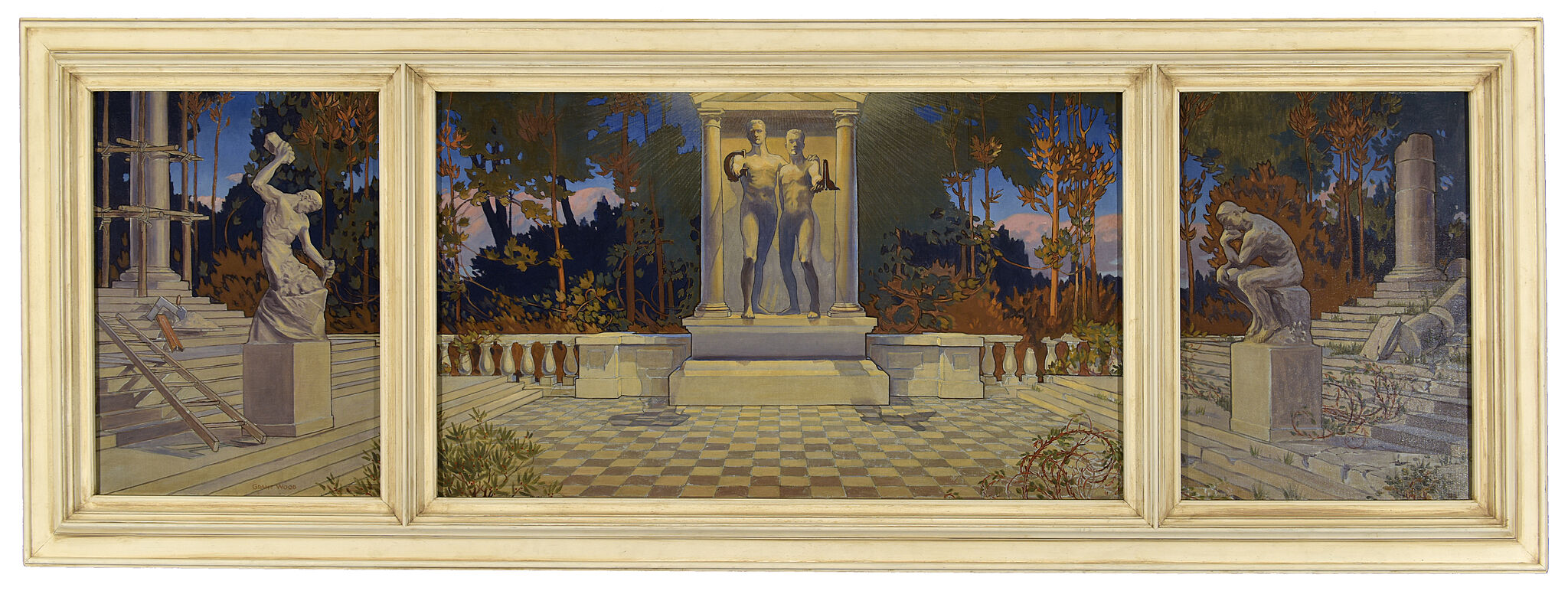Grant Wood: American Gothic and Other Fables | Art & Artists
Mar 2–June 10, 2018
Grant Wood: American Gothic and Other Fables | Art & Artists
Commissions and Impressionist Paintings
2
Like many American artists of his generation, Grant Wood initially looked to Europe as the center of culture. He went abroad four times between 1920 and 1928 for a total of twenty-three months, primarily studying the work of the French Impressionists, whose loose brushwork he adopted in the first two decades of his career to paint what he later called “Europy-looking” subjects. His assimilation of the style served him well in Cedar Rapids. By the early 1920s, he had become the city’s leading artist, selling his paintings to its residents and executing commissions in a variety of styles according to each project’s needs.
The First Three Degrees of Freemasonry, 1921
The Anamosa, Iowa, chapter of the Freemasons, the world’s oldest and largest fraternal organization, commissioned Wood to make this allegorical triptych of the three levels of Freemasonry through which members advance in a prescribed path of study and rituals. Wood grounded his image in the Masonic legend of Hiram Abiff, chief architect of King Solomon’s Temple, whose murder by individuals attempting to extract a secret password from him underscores the importance in Freemasonry of fidelity and the certainty of death.
From left to right, Wood illustrates the building of the temple, its completion, and its decay, setting within those panels auxiliary themes of man carving his own destiny, the equality of human beings, and the contemplation of life in old age. Wood modeled the statuary in the painting on The Builder by Czech-American artist Albin Polasek (1879–1965), Michelangelo’s David, and Auguste Rodin’s The Thinker.

